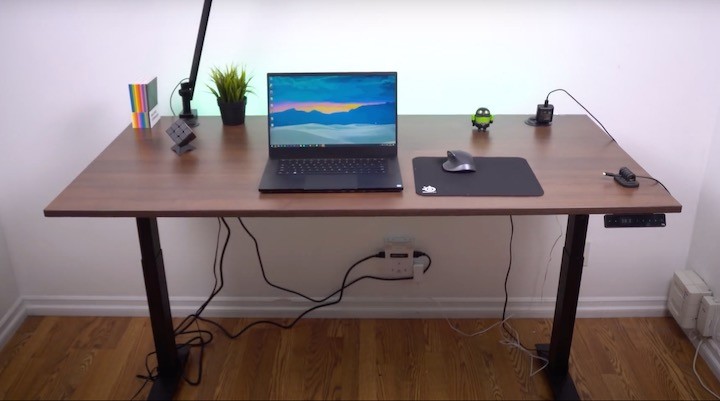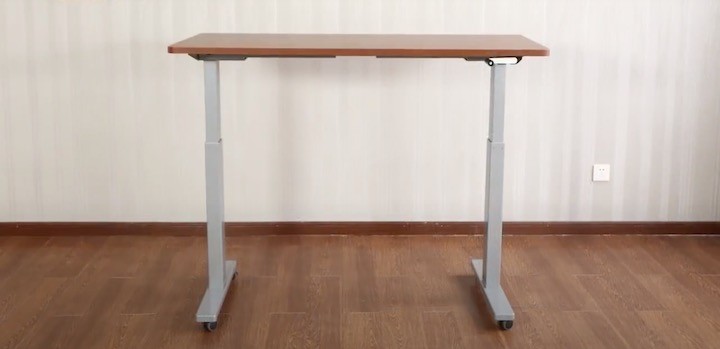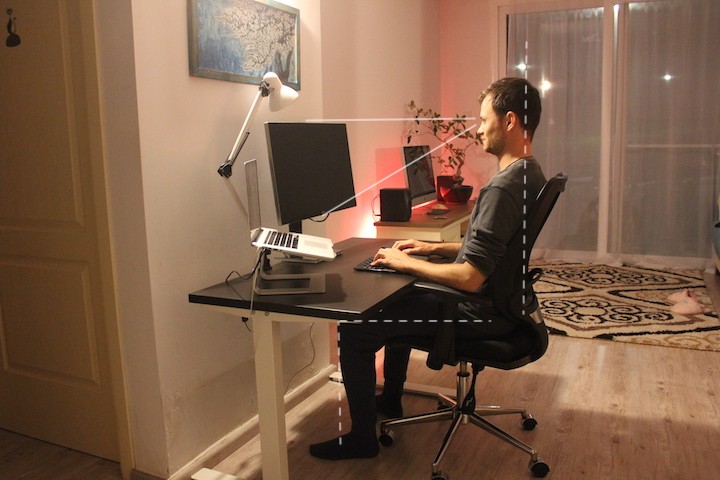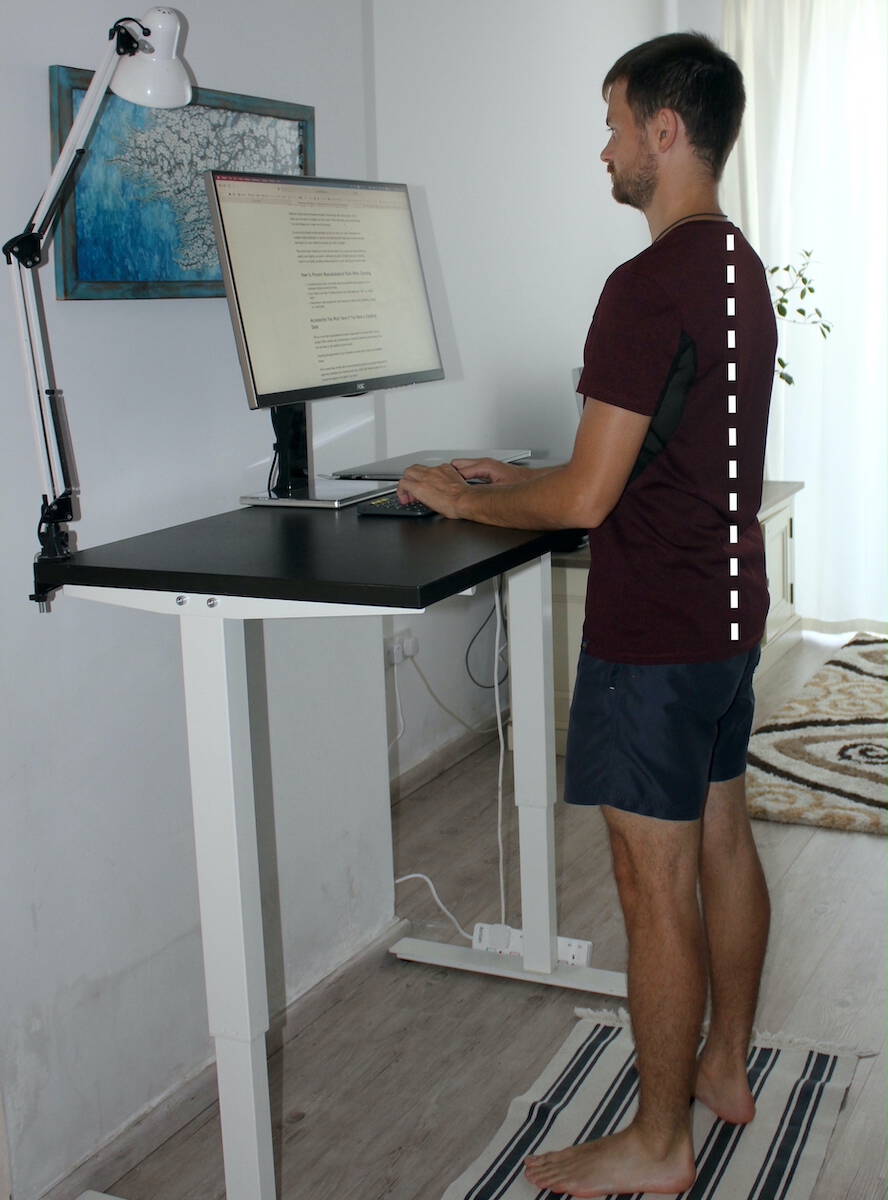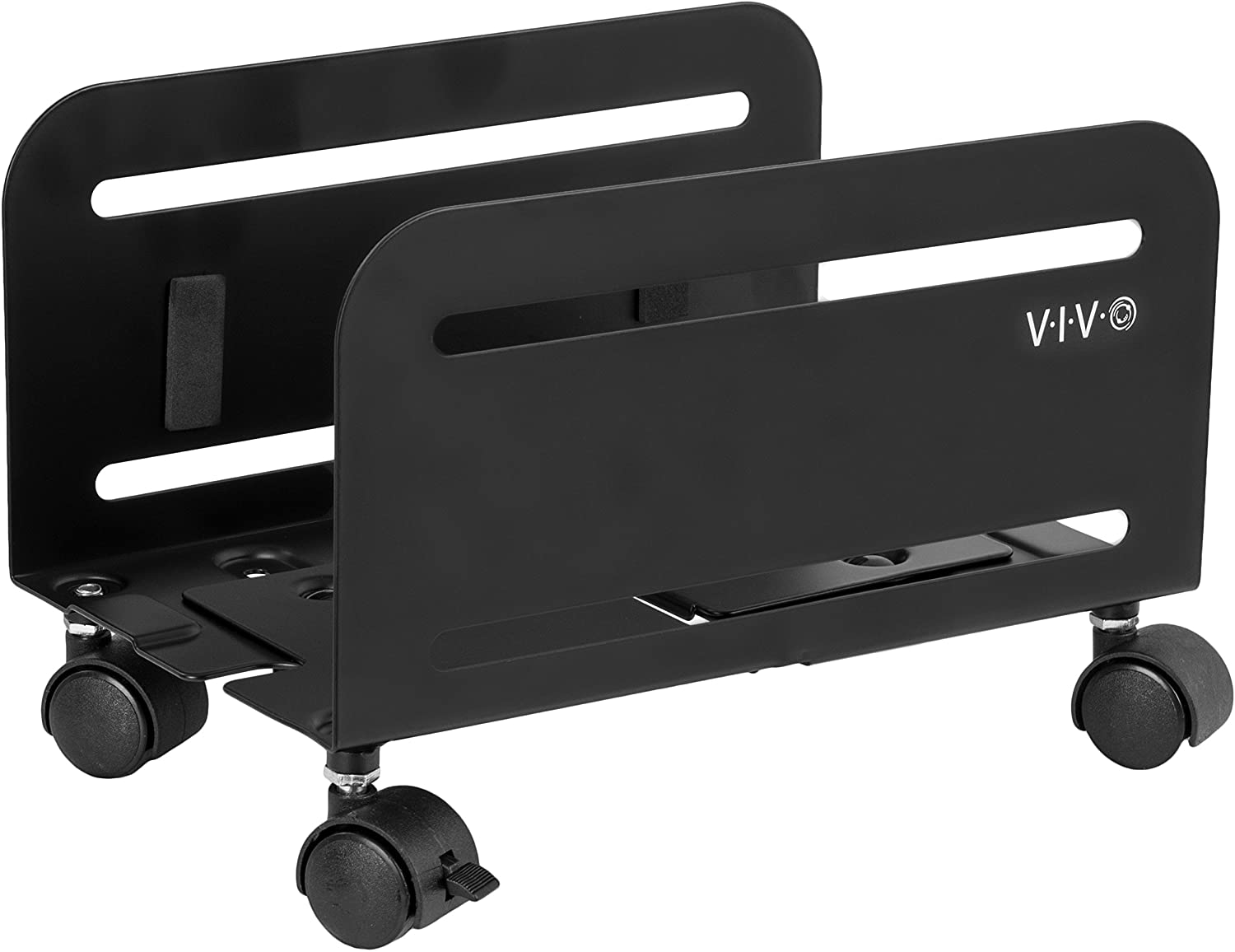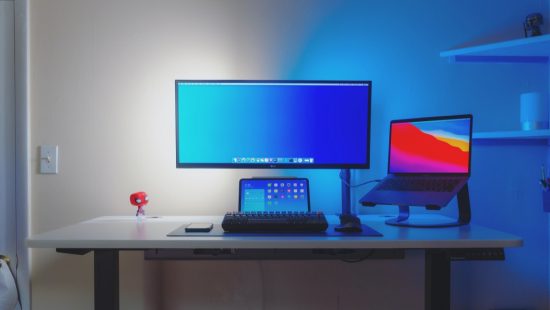Have you already taken the step of setting up a standing desk at your workplace? If yes, then you already make your life more secure & disease-free. It will surely enhance your state of life. If not, then you are in great trouble.
Research has been connected to health concerns such as obesity and metabolic syndromes over extended durations - a group of disorders comprising raised blood pressure, high blood sugar, waist extra body fat, and abnormal cholesterol levels.
But have you thought about a standing workstation suitable for home ergonomics, such as the right desk height and where to set your computer?
It will surely reduce your medical treatment's cost! If you can get the natural remedy of back pain and other diseases, why not try that once? ZenworkPro always cares for your betterment, and today, we come with a comprehensive guide on installing standing desks at home and your workplace!
Standing Desk & Recent Trends | What World Think About Standing Desk?
Page Contents
The standing desk business is flourishing, as both supply and demand for workplace furniture that gets employees up and moving have increased. This is anticipated, a growing number of medical studies indicating that sitting all day at work, which millions of people do, can harm employees' health.
The University of California Speaking up against lengthy periods of sitting in this article.
Long spans of sitting are connected to medical issues like coronary illness, malignancy, misery, chronic diabetes, and heftiness— breakage of long development periods at any rate once an hour diminishes such risks.
They also address the benefits of using a space to roam around the office and universities during break time. They recommend introducing a standing desk too.
Moreover, the University of Wisconsin-Milwaukee's research team suggests that standing desks are all the rage in corporate environments.
Perhaps they should be included in schools as well. It will enhance the students' study, reduce the boring sitting classes, and lower t the risk of various diseases. Their motto is "Taking a solid stand and support the students! More about this article can be found here!
Why Should You Necessitate A Standing Desk Right Now?
You, without a doubt, found out about "Sitting is an ultimate smoking" or "your seat is slaughtering you,." We are thankful to James Levine of the Mayo Clinic that he truly highlighted this issue when he released his research on NEAT, Non-Exercise Thermo Genesis, in 2014. NEAT is the energy spent on all that we do not sleep, eat or play like a sport?
Dr. Levine was able to raise awareness that we sit a lot and that all civilized civilizations are affected.
We're sitting at our morning commute, sitting at the desk, sitting at meetings, sitting at midday, driving home, sitting at the dining table or the restaurant, then watching the TV. Then the following day, we perform it again, and the next day too. We hope you understand the point!
Society came to fruition as we moved out of the modern upset, where we worked and were considerably more regularly on our feet. This was gone before by the horticultural stage where we worked in the field.
Hopefully, we have become a knowledge-based society today, which means that many of us sit at computers all day and do not profit from the physical exercise of working in the field or a factory.
Dr. Levine added, "The chair has been so attractive that we have given up our legs. Now is the moment to look for methods to put us back on our legs."
Dr. Levine has particularly been concerned about the linkage between the lack of activity through multiple generations and the significant growth in obesity, high blood pressure, diabetes, and other health concerns that might be extremely harmful. So there are all relevant arguments for seriously considering this topic!
Why do You Need to Construct a Standing Desk of Your Own?
Do you want to build your own adjustable standing desk? There are several reasons for your project, but most DIY people develop methods to lower the cost of their standing workstations. However, as you can see from today's ergonomics, some solutions cost a lot more than you can buy alternatives.
In addition to the expense of building your desk, some people prefer to add a touch of customization. You may select your materials, colors, and finishes by building your materials. You may also find your job or home office in a special position, where several things are excluded owing to their size.
What to Consider for a Standing DIY Desk
It is vital to examine several considerations about the desk with standing option. Besides, you have to watch out for Desk's designs, pricing, ergonomics, and the ability to alter the height. Before you start browsing for ideas for your DIY standing desk, have a look at our consideration first:
Expense
Invest according to your budget. You can potentially exceed the cost of purchasing a standing desk, depending on the components required for your construction.
Built-In Ergonomics
Many leading design firms engage significant research and development on ergonomics knowledge and the comfort of their goods and keep their posture sound. It is easy to ignore these aspects when you design your own.
Adjustment of height
When planning a standing work area, the switch from sitting to standing is a vital factor. Many of the options we have found cannot be adjusted.
It is typically not very sustainable when some are always standing. Transitioning from one position to another also gives more diversity in movement, a vital standing practice. You can try our height adjustment desks. We provide some awesome collections for this Desk type!
Consider the height of your Desk
Make sure that you brush up on a decent ergonomic workplace before selecting a DIY standing desk. In brief, you want your elbows to be just below the height of the typing surface.
Types of Standing Desks
Nowadays, standing workstations are acquiring a great deal of merited consideration. To be sure, we enjoy investigating the benefits of standing work areas and workstations in this blog.
Now that you understand how standing desks and workstations may benefit your job and health, it's time to learn about the many types of standing desks available. Even though these desks differ, they are all simple to use and comprehend.
Standing-Desk Static
Static or fixed standing alone desks are usually built-in and have a preset height that is always set. This might be a counter or a desk designed to a specified height.
Do you like to get a ready one standing desk for your home? Then below is the best option for ready one:
Mechanically Adjustable
Because it is adjustable, the adjustable standing desk is dubbed "set it and forget it." However, unlike your chair, repositioning this sort of desk might be difficult.
Want to buy a mechanically adjustable standing desk? Follow the link below:
Electric - Adjustable Desk
Remember how exciting it was to be able to quit cranking your vehicle window open and instead be able to open and close it with the press of a button?
This desk is equipped with an electric lift. By pressing a button, you may modify the height of this desk to your liking. Although these desks are more costly, their convenience of usage allows them to be used by numerous individuals.
Are you trying to find a cheap electric stand up desk? Here is a solution for you:
Adjustable - Converter Desk
This is the most cost-effective solution, and it can be implemented fast. You may make use of an existing desk or even a countertop. It simply sits on top of your desk and transforms your workplace into a standing workstation.
Find your adjustable converter desk from here:
Standing desks are more than a passing trend. Sitting for extended periods might be hazardous to your health. It is critical to get up, move, or stand regardless of where you work.
It would help if you educated yourself on the many types of standing desks so that you can make an informed selection for your workstation or the workplace of your entire staff.
Setting up A Standing Desk: Complete Guideline
To get the most out of your sit-stand desk, you should tailor your workstation to your body's demands. From the outside, it may appear like using standing desks correctly is a no-brainer: you stand. You have a job.
You do it again. However, because every human body is unique, ergonomics is not a precise science. The ideal height for your workstation will range from person to person, which is a good thing!
Here are some guidelines for creating the optimal active workstation using your own body's dimensions and natural posture. Once you've got everything set up, keep reading for further information on utilizing the standing desk effectively and reap the greatest benefits.
While Standing
Always set your standing desk at the height of your elbows.
Keep your neck neutral and your wrists straight in front of you by bending your elbows at a 90-degree angle. Raise or lower the standing work area so your lower arms correspond with the work area surface.
With straight, relaxed wrists, your hands should float over the keyboard. Your fingers can hang down to meet the keys on the console. However, your wrist should never be calculated up or down. These suggestions are intended to keep your arms and hands safe.
Have a Close Look On Posture
Maintain a high neck and relaxed shoulders. Maintain a modest bend in your knees while standing to avoid hyperextension or joint locking.
"A neutral spine is another term for good posture. When we have good posture, the muscles that surround the spine are coordinated and support the weight equally," explains Nina Strang, a physical therapist and strength and conditioning expert at the University of Michigan.
A sedentary lifestyle and poor posture are to blame for the majority of backaches.
Keep your handles straight to the desk’s top and parallel.
The last modifications are made to maintain the neutrality of your wrists: Your fingers may dangle down to the keyboard, but you should never lean up or down your wrist.
The internal wrist structure may be compressed, and the risk of developing carpal tunnel syndrome repeatedly increased (up and down) the expansion and bending of the wrist.
While Sitting
Adjust your ergonomic chair’s height
Set the height of your chair to be parallel with the base of your knees on top of the sitting cushion. Keep your feet on the floor level and leave a hole between the rear of your knees and the front edge of the seat. Your feet should be at a point of 90 degrees corresponding with your knees.
A suitable ergonomic chair adjustment enables you to keep a decent position while preventing pain in the back.
Lift or lower your table to match the height of your elbow
At a 90-degree angle, bend your elbows and let your arms stick free in your body with braces just touching your elbows. Lift or lower your adjustable desk till your forearms reach the surface. The hands with straight, relaxed wrists should hover over the keyboard.
Look at your position when you sit
The chair's backrest, which has to be curved or cushioned to satisfy your back hollow, should maintain your upright posture during the session.
Sitting in an uncomfortable posture increases the strain on your spine's discs and vertebrae, which can lead to backache. Lumbar support for spinal disks and vertebras is important to prevent pressure.
Since most backaches are due to sedentary habits and inadequate posture, using this advice can help reduce the likelihood of damage to your body.
What Should Be The Proper Height of Your Computer On the Standing Desk?
Your screen must not be too near to your face but should be eye-like. Your display should be the top third at eye level so that your neck does not bend up to view it.
Slightly upward (10 to 20 degrees) and turn your monitors towards you to prevent your neck from curving.
To elevate the laptop on your stand desk, you need attachments. Laptops have been created to relax on the lap (the name is hence). It would help if you had a different keyboard, monitor, and mouse while working with a laptop, so you may raise the screen to meet your seeing line. Prevent strain in the eye by ensuring your Computer does not have a light source that produces glare.
If you place your computer screen lower than advised, you will be forced to gaze down at it.
Ensure your screen is at the appropriate level to keep your head and whole body from shifting towards it, which would bring about a helpless stance.
Your monitor needs to be somewhere in the range of 20 and 28 inches (51-71 cm) away from your face.
If your PC is excessively low, we suggest using screen arms or another frill, for example, our hand-tailored screen or PC stand, richly built from strong wood. Computer Monitor stand will help you in keeping a charming ergonomic stance for your neck.
How long should you stand at your standing desk?
Sitting and standing should be alternated. It has been shown that excessive sitting is detrimental to one's health. However, just as sitting all day may be harmful to your health, standing all day may be as well.
Alternating between sitting and standing can help minimize the avoidable physical discomfort. According to research, the sitting to standing time ratio should be 1:1 or 2:1. That implies you should stand for 30 to 45 minutes per hour throughout an eight-hour job. This will keep you productive and busy.
Altering between sitting and standing postures will not only keep you active but will also increase your productivity. Indeed, the above-mentioned sitting-to-standing ratios have been demonstrated to be best for comfort and energy levels. Learn more about the ideal standing-to-sitting ratio while utilizing an ergonomic workstation.
How to Keep Proper Posture While Standing
Maintain a high neck and relaxed shoulders. As previously said, stand upright; do not bend your chin down or upkeep your neck neutral. When alternating, use a small footrest or an anti-fatigue mat to keep one foot elevated.
Do not hunch forward or lean backward, as this can strain your spine. Remember the invisible thread visualization or attempt the traditional book-balancing-on-head debutante technique if you can't determine whether your back is straight!
Play some music! Listening to music that stimulates you to move your hips and shift your weight, even slightly, can assist in alleviating the strain of lengthy periods of standing. Listen to our Spotify playlists and learn about how music may help you function better.
How to Prevent Musculoskeletal Pains While Standing
- To avoid shoulder strain, your hands should be allowed to rest squarely on your keyboard without hunching forward.
- Don't clench your fists. To relieve strain on your hips, keep them "soft" (i.e., slightly bent).
- Remember to take pauses from static standing by either sitting, stretching, or going for a brief stroll.
Accessories You Must Have If You Have a Standing Desk
Did you know that musculoskeletal disorders responsible for more than half of all job injuries? When workers are uncomfortable or incorrectly positioned while working, they are more likely to get repetitive motion injuries.
Improving the ergonomics of your workstation can help avoid these musculoskeletal issues.
You're presumably worried about musculoskeletal concerns if you've put resources into ergonomic hardware like a standing work area, a bent split console, screen arm, or a mouse that adjusts to the state of your hand.
Improving workplace ergonomics can assist you in improving your posture, hence reducing weariness, stiffness, and pain.
Under Desk Treadmills
An under desk treadmill foundation is a treadmill that has been stripped of its arm rails and put under a standing desk for work-related walking. These devices are available in various sizes, forms, and quality levels, with some being better suited to the repetitive action of walking than others. You can place it under the standing desk and can easily carry on your exercise.
Here is an example of under desk treadmill for better exercising:
Under Desk Cable Management
Better cable management is a must-have feature. Because the desk may be adjusted in height, the main cable should be flexible.
A Monitor ARM
A suitable monitor ARM is another necessary piece of equipment to add to your standing desk setup. A Monitor desk mount will also be handy in this case. You can find an awesome monitor ARM from here:
Anti Fatigue Mat Wooden Wobble Balance Board
It won't just diminish strong strain and irritation toward the back, center, legs, and lower legs. Yet, it likewise improves attitude, blood flow, and joint versatility - making it incredible for standing adjusting practices and non-intrusive treatment.
Regular foot massage relieves physical and mental weariness, improves the sub-health condition, and stands on the massage spots with your bare feet for a comfortable respite from the hard job.
To avoid your feet pain, pick a durable Balance Board from below:
Keyboard and Mouse Platform For Standing desk
Is your keyboard set up at elbow height, with your arms bent at a 90-degree angle? If not, you risk straining muscles from your fingertips to your neck! This can result in hand and wrist discomfort, as well as carpal tunnel syndrome.
You may help anticipate these issues using a sit-stand console arm, which permits you to rapidly put yourself at the ideal ergonomic tallness, regardless of whether you sit or stand while working.
An under-desk keyboard tray is another useful item. A console plate mounted under the work area permits you to put your console at the ideal tallness for composing: elbow stature for both sitting and standing.
While composing, keep your arms in an unbiased stance, your elbows bowed at about a 90-degree point, and your wrists as straight as could be expected. To operate your keyboard or mouse, you should not have to stretch out or stretch your arms.
Your keyboard platform may also assist you in optimizing your typing posture in other directions. The most ergonomic console position is at a negative point, with the highest point of the console pointing lower.
Furthermore, the ability to swivel left and right provides you greater placement freedom, which might be useful if you move about a lot. You can try an ergonomic mouse from below:
Mat to Reduce Fatigue
The curved surface of the Active Standing Desk Mat has been particularly designed to stimulate movement and stretching when standing.
The slanted sides of the mat let you stretch your calves, raise one or both feet, and stand with a broader stance comfortably.
Shoes that are both comfortable and supportive
When you sat at a desk at the office, you wore your normal work shoes or bare feet or slippers if you were at home. However, when standing for long periods, your body relies on your feet. Therefore good foot support is critical for your general health and well-being.
Proper standing is essential, and supportive shoes make a huge difference. Running and walking shoes are designed to give the maximum support, albeit they also differ. Investigate which shoes will be ideal for you and your workplace.
For better foot support, buy an awesome standing shoe.
Rolling Foam
Foam rollers may be used for various activities, but one you may not have considered is using one to stand on while at your desk. It's not meant to be used regularly, but it may provide some relief and even a little exercise like the step stool.
You may select between extra-firm and durable surfaces that vary from smooth to stiff.
CPU Holder
Keeping your computer and monitor close together eliminates the need for long wires, which might be useful if you increase your desk. The Under-Desk CPU Holder from Uncaged Ergonomics keeps the CPU off the dusty floor and suspended for optimum cooling.
Furthermore, by placing it underneath the desk's surface, you reduce clutter and free up space on your desktop.
A Laptop Stand
Uncaged Ergonomics additionally gives an assortment of lightweight, modest, convenient PC stands that can go with you anyplace: with one of our PC stands, for example, the Viozon Monitor and Laptop Mount, you can easily work, surf the web, or watch films on your PC.
Its folding legs allow you to elevate your laptop to a range of heights, making it suitable for sitting on the sofa or in bed, as well as creating a standing workstation at home or work.
These laptop stands are highly adaptable since they can be used for more than just your laptop—they're also fantastic for books, tablets, eReaders, and even sheet music!
A Beautiful Monitor Riser
A display that is too low causes you to tilt your chin down, whereas a display that is too high causes you to tilt your chin up. A monitor that is tilted to one side forces you to turn your head and neck while using the computer. Furthermore, holding these positions for most of the workday is not beneficial for your general health.
Many individuals need to lift their displays, particularly if they are transitioning to a standing desk. A desktop computer monitor stand can assist you in adjusting the height of your display to a more ergonomic position.
Choose a height-adjustable monitor stand from this link:
Frequently Asked Question- FAQ’s
How much time should you spend standing at a standing desk?
Sitting at a desk all day is terrible for your health, and doctors have long advised individuals to stand at their workstations for around 15 minutes every hour.
What is the summary of setting up a standing desk?
- Always set your standing desk at the height of your elbows.
- Maintain a high neck and relaxed shoulders.
- While standing, avoid locking your knees.
- Maintain eye-level viewing of your screen.
- Maintain straight wrists that are parallel to the desktop.
- Do not stand for more than 60 minutes in a row.
Is a stand-up desk truly beneficial?
While the latest study reveals that a standing desk is unlikely to aid in weight loss or prevent weight gain, there may be other advantages to using one.
Health doctors research and propose that glucose levels recover prompter when individuals invest more energy standing after a dinner.
Is standing at a desk dangerous for your knees?
Spending the entire day upright on the hard floor, on the other hand, might work against you. If your profession requires you to be on your feet all day, or if you overdo it with your standing desk, you may suffer knee pain, hip discomfort, heel pain, backaches, and other symptoms.
What is the optimal sitting-to-standing ratio?
1:1 or 1:3 According to research, these are the optimal ratios. That is, if you have spent 1 to 2 hours sitting at your desk, you should stand for one hour. Using this method provides maximum comfort and energy levels while avoiding the development of health concerns.
Final Words
Sitting for long periods of time is extremely harmful to your health. Individuals who sit consistently are more at risk of affecting diabetes, coronary illness, etc. You can’t deny the bad effect of sitting idle at your office chair, can you?
Furthermore, sitting all day burns very few calories and has been related to weight gain and obesity in several studies.
This is a huge issue for office employees because they sit for most of the day. Standing desks, on the other hand, are becoming increasingly popular for maintaining proper health. We hope this guideline to setting up a standing desk will help you to assemble a standing desk.

